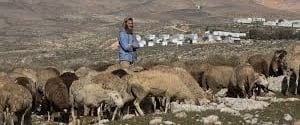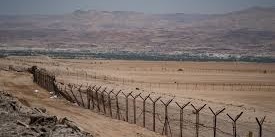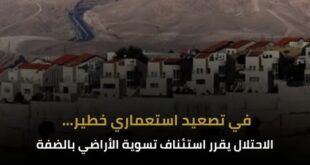By: Madeeha Al-A’raj
The National Bureau for Defending Land and Resisting Settlements stated in its latest weekly report , that in spite of waging a brutal war on Gaza Strip, demolishing, raiding and invading the Palestinian cities, towns, villages, and Refugee Camps in the northern West Bank, the Occupation Authorities are carrying out a dangerous project to change the landscape of the West Bank, and advance the imposition of Israel’s ‘sovereignty’ over Area C. In 2024, Netanyahu’s Government allocated NIS 3.1 billion – ($ 838,000,000) to build hundreds of kilometers of new roads between the Palestinian territories, some of which are illegal.
Those roads aren’t to improve infrastructure, but to link the Israeli settlements established in the West Bank with the Israeli cities within the Green Line i.e. (the territories occupied in 1948), which contributes in implementing the Israeli annexation project and create a de-facto on the ground that will be difficult to change. According to government statements, the goal of such a move is to enable a million of settlers in the West Bank, and to impose Israeli sovereignty over their settlements, even though such projects directly influence the lives of Palestinians by ‘isolating their cities, towns, and villages from each other, and disconnecting them from their surroundings.’
According to an investigation last week by the Israeli website ‘Shomrim’, it confirmed that the Occupation Authorities continue to expand the settlement road networks by paving hundreds kms of new roads to connect settlements and unauthorized outposts, with government support, making it difficult for Palestinians to exercise their rights to their lands. Shomrim investigation cited a number of examples of this, such as, the road built east of the Mikhmas village, northeast of Jerusalem, to connect the Nahalat Zvi settlement outpost established in 2022 with a new settlement outposts recently established in the area. As a result, landowners in the area are no longer able to access the entire area, and if they attempt to do so, they are subjected to attacks by settlers.
The settlers paved this road in last Oct, despite contacts made by the residents of the area with the Coordination and Liaison Office and the occupation police, who did nothing to prevent the paving of this road, despite having previously destroyed a road built by the people of Mikhmas. The investigation showed that under the settler government led by Ben-Gvir and Smotrich, there is a noticeable momentum in the construction and paving of unlicensed roads, in addition to some roads approved by official authorities. Not only the roads prevent Palestinians from accessing their agricultural lands, but also change the face of the West Bank.
In addition to this road, the investigation tackled another road near Maghayer al-Deir village. The investigation revealed that residents were surprised to discover engineering tools used by settlers on the northern side of their village, just meters from their homes. The tools were authorized by the Binyamin Settlement Council, which allegedly allows them to carry out work to protect Sate lands. These roads facilitate the access of settlers from the settlement pastoral farms to Palestinian villages, by tractor, car, and on foot, as is the case with Um al-Marajim area, near the Duma village in the Nablus Governorate. They enable them to storm it, as happened with the ‘Gal Yosef settlement farm’, which was established last year, whose homes and vehicles were burned, by quickly accessing the area via the road that leads from the settlement farm south, directly next to the area.
A Shomrim investigation revealed multiple ways to fund unlicensed roads, directly through the budget of the Settlement Ministry, which, in turn, supports land patrol departments run by settlement councils in the West Bank. The departments are intended to monitor and prevent planning and construction in Area C, and may receive government support for ‘road construction and paving of dirt roads.’ Settlement Ministry documents show that the Hebron Hills Settlement Council received NIS 1.1 million last year to support a project that included paving a road in the Susya area. As part of this project, the Gush Etzion Settlement Council received NIS 958,000 ‘to improve existing roads to protect state lands in the hills,’ while the Binyamin Settlement Council received about NIS 1.9 million for 6 different road construction projects.
The Occupation Authorities cover up this by hiding information about the new roads, but Israeli organizations document what is happening based on aerial photographs. The Peace Now Movement explains that between 2023 – 2024 about 139 unlicensed roads were paved in the West Bank, totaling 116 km in length. In its latest report, the movement explains that 25 roads were paved to establish new settlement outposts, 31 roads to expand existing settlement outposts, 8 roads between an existing settlement outpost and the nearest settlement, and 46 roads to allow access to areas where there is currently no settlers. No building plan was prepared for any of these roads, nor legal permit issued for that to operate.
Yoni Mizrahi, who prepares the Movement’s report, confirmed that road construction has become a key tool for seizing Palestinian land without the need for a dense settlement population, adding, ‘In some settlement outposts, only 1 or 2 families may live, but with the help of roads, they control vast areas. The last two years have witnessed an escalation in settler violence and an increase in the construction of outposts and farms, along with the expansion of the road network that strangles Palestinians and restricts their access to their lands.’
Settler leaders openly state that the goal of building such roads is to contribute to the seizure of the largest possible area with the least number of settlers. Finance Minister Bezalel Smotrich made this clear during a recent official ceremony south of Hebron, where he and Settlement Minister Orit Struck handed over dozens of four-wheel drive vehicles to support these farms. Smotrich emphasized that the proliferation of sheep and goats on the land prevents Palestinians from accessing them. The roads being built to the farms and settlement outposts play a vital role in this, as they not only facilitate the movement of settlers but also contribute to consolidating their control over the land. Yotam Cohen, a volunteer with the Israeli human rights organization Torat Zedek, confirms that these roads also reinforce attacks on Palestinians by enabling settlers to quickly access the lands in four-wheel drive vehicles.
At a conference held in June of last year, the Director General, Hosea Harari, stated that in 2023, the department invested about NIS 75 million to support unauthorized farms and outposts, including NIS 7.7 million allocated for road construction, the department also received an additional budget of NIS 75 million from the government to ‘support security components’ in the settlements, including guard posts and surveillance cameras. These ‘pastoral farms’ receive generous financial support not only from the government, but also from local authorities in the settlements, the Settlement Department of the World Zionist Organization, and from settlement organizations and associations, such as ‘Friends of Samaria, Amana, and the Israel Permanent Fund’, known as the ‘Jerusalem Fund’, which is a major supporter through its participation in various projects, using devious and dangerous means to whitewash the farms, expand them, and extend roads to ensure communication between them.
The terrorist Amana Movement, which was sanctioned by the former US president’s administration, plays a prominent role in providing support to the settlement outposts and pastoral farms, including helping them pave roads to connect these outposts and farms, and to the nearby settlements. These efforts are being spearheaded, according to Israeli sources, by Ze’ev Hever ‘Zambish’, a man many say has an open door to Netanyahu. Some observers see him as the “mastermind of the project to seize control” of Palestinian land. This man, who heads the Amana group, the main executive arm of the outposts, was quoted by Haaretz in an interview with the magazine Nadalan Yosh (Real Estate in the Territories), saying that “building connections between these outposts and the farms and preserving open land is Amana’s central mission,” and that “the main tool we use is the farms.”
He added that “the area occupied by these farms is 2.5 times the area occupied by all the hundreds of settlements combined.” Amana, led by Ze’ev Hever, a far-right terrorist in the Jewish underground in the early 1980s, was convicted in 1984 for his involvement in the attempted assassinations of mayors in the West Bank in 1980. In subsequent years, he became more influential, and the occupying state awarded him its highest official award ‘the Israel Prize’. He is now the secretary-general of the association responsible for building most of the most violent outposts in the West Bank. Sources report that A powerful organization, its assets are estimated at NIS 600 million – about $ 158 million.
Within the context, Yossi Dagan, a prominent member of the Likud Party and head of the Northern West Bank Settlement Council, who is described as an ‘octopus in the service of settlements.’ He has done much to achieve this goal, particularly securing the necessary approvals for the construction of the Hawara bypass road, the bus station at the eastern entrance to Ariel, connecting the settlements to high-speed internet, lighting intersections and streets, installing traffic signs at settlement entrances, and licensing cemeteries. Yossi Dagan maintains strong relationships with prominent rabbis such as Rabbi Levanon, Daniela Weiss, head of the Nahala settlement movement, and the Amana Association. He manages a broad network of external relations with regional and international entities, which he calls ‘Friends of Samaria,’ enabling him to raise funds not only to support settlements and the expansion of outposts and terrorist pastoral farms, connecting them to internal roads, but also to arm the settlers.
On another note, Israeli reports indicate that the ‘Settlement Department’ of the Zionist Organization and the Jewish Agency is involved in serious crimes, including the transfer of ownership and disposal of private Palestinian lands, dedicating them to Jewish settlements, and contributing to the displacement of Palestinians from their pastures and farms, with the support of the military and the political echelon. According to the Peace Now, it has become clear in recent years that this division is deeply involved in illegal activities by allocating private Palestinian lands to settlers, without the consent of their owners. This is despite the fact that the Government Oversight Department issued an advisory opinion in 2015 confirming that the powers and duties performed by the Settlement Division, a non-governmental body, fall within the core powers of government, and therefore the government may not delegate them to a non-governmental entity.
The opinion also stipulated a ban on allocating direct budgets to the division within the budget law or through direct financial transfers. Instead of acting on this advisory opinion, in 2015 the Knesset enacted an amendment to the Law on the Status of the World Zionist Organization and the Jewish Agency for the Land of Israel, aimed at enabling the government to continue its activities in the West Bank through the Settlement Division. With the passage of this law, the status of the Division was formally consolidated, allowing it to freely dispose of the lands transferred to it by the state without reporting.
List of Israeli Assaults over the Last Week Documented by the National Bureau:
Jerusalem:
- Forcing Jerusalemite, Sufian Al-Lawzi to demolish his home in the Kafr Aqab town, and gave him only half an hour to demolish his two-room house, claiming it was built without a permit, and he would be fined huge sums of money if he didn’t comply with the self-demolition order immediately. He was also forced to remove the rubble from the place.
- Attacking guards and employees of the solid waste landfill in Beit Anan,, seized an excavator and a motorcycle, resulted in a number of them sustaining severe injuries and fractures. They also seized a ‘bagger’ excavator used for dumping waste, in addition to a motorcycle belonging to one of the guards.
Hebron:
- Uprooting a number of olive seedlings and vandalized a fence surrounding land belonging to the Al-Hathalin’s family in Khirbet Um Al-Khair in Masafer Yatta.
- Releasing their livestock around the house of Farid Al-Hamamdeh, provoked the family, and erected occupation flags on citizens’ lands in the Fateh Sidra area.
- Injuring a citizen, his wife, and his son in an attack by settlers in the Wadi Sa’ir road, which resulted in bruises and various wounds to his body. They also assaulted his wife, 50 resulting in a broken hand, and his son, who sustained head injuries.
- Attacking a sit-in in the Al-Zweidin village that denounced the settlers’ attempt to seize their lands.
- Notifying the demolition of 3 houses located on an area of 150m2 belonging to Musa al-Hathlin, and a house in the Hamida area in the Um al-Khair village, located on an area of 120m2 belonging to Nayef Suleiman al-Najada, while 5 houses were demolished in the Idhna town, west of Hebron, under the pretext of not having a license. In the al-Ras area of the town, the occupation army and its settlers in military uniform raided the house of citizen Akif Salem Harizat in the village of Manizil in the Masafer Yatta area, destroyed the contents of the house and its furniture, and stole NIS 6,000.
Bethlehem:
- Notifying the demolition of a car-wash facility in the Hussan village, located in the “Al-Shurafa” area at the eastern entrance to the village, under the pretext of not having a license, noting that the facility had been demolished previously.
- Demolishing a 100m2 house, built of iron and galvanized sheet metal, in the Al-Khamar area, southeast of Bethlehem, under the pretext of not having a license.
- Paving a settlement road in the lands of the Artas village, adjacent to the tourist pools of Solomon, reaching the eastern area of Al-Abayat. This will lead to the possibility of separating the areas of Abu Zeid and Khallet al-Nahla from Artas, and the possibility of bypassing the Khalayel al-Loz area and separating it from its lands with the aim of expanding the ‘Efrat” settlement.’
Ramallah:
- Injuring citizens Adnan Hassan Rashid and Musa Shalaldeh in an attack by armed settlers on the Kobar town. They also kidnapped the two young men Adnan Abdul Rashid and Mohamad Bassam, after tying them up, assaulting and abusing them.
- storming the Sinjil town, raised Israeli flags in the Tall area. Meanwhile, the occupation forces began building a separation wall around the town, extending to 1,500 meters. This prevents residents from moving, and contributes to the settlers’ control over the town’s lands, turning the town into a prison to strangle it and isolate it from its extension of the houses located behind Road 60.
- Demolishing 2 inhabited houses belonging to citizens Rajih al-Taher and Faraj Abu Zahra in the Qebia village, under the pretext of building in areas C.
Nablus:
- Confronting an attack launched by settlers in the Beita town, south of Nablus, where settlers attacked a number of participants in an anti-settlement march around Jabal Sabih. Noting that the residents of the town organize a weekly march to protest the Israeli occupation forces’ seizure of their lands in Jabal Sabih, for the benefit of the Evitar settlement outpost.
- Bulldozing lands in the Qusra village as part of a policy aimed at controlling more agricultural land for settlement expansion. The occupation forces delivered a notice to stop work on the Burqa Park, which is being established in the archaeological area of Al-Masoudiya, under the pretext of being located in Area C. It is worth noting that the park is funded by the Palestinian Union of Local Authorities at a cost of NIS 130,000, and work began ten days ago to provide entertainment for the residents of the area and make it a breathing space for families, in light of the siege and settlement attacks.
Salfeet:
- Storming religious sites in the Kifl Haris town, amid a heavy deployment of Israeli occupation forces, who closed the entrances to the town and imposed a tight security cordon, preventing Palestinian movement and forcing shops to close, in a scene that is repeated during Jewish holidays. The raid came in response to calls launched by settler groups to organize noisy Talmudic prayers and celebrations, interspersed with scenes of dancing and singing near the Islamic sites, in an ongoing attempt to impose a new reality and Judaize these places.
- Banning road paving project connecting the Bidya and Masha towns, after soldiers stormed the site, halted work on the project, and issued orders to the workers to stop implementation.
- Handing orders to remove a fence and uproot olive trees over an area of 100 meters, and uprooted 12 olive trees under the pretext that it is a nature reserve in Wadi Qana. The Israeli occupation forces also uprooted more than 1,200 olive trees from citizens’ lands in the Haris village, covering an area of more than 63 dunams, in preparation for confiscation for settlement expansion in the area.
Jordan Valley:
- Storming Khirbet Samra area in the northern Jordan Valley, roamed among residents’ homes, and placed occupation flags nearby. Others began fencing off and cultivating land in the Wadi al-Faw area in the northern Jordan Valley, despite the fact that it belongs to the residents.
- Attacking a shepherd and attempted to steal his livestock in the al-Farisiya area, Others cut water lines in the al-Auja waterfall community and carried out provocative car tours among residents’ homes, cut the water pipes extending from the al-Auja spring, which supplies residents with drinking water.
- Storming the Ein al-Hilweh Community, and placed occupation flags on residents’ property in repeated provocative acts.
- Erecting cement blocks around some springs in Khirbet al-Deir in an additional step to impose their control over them and prevent Palestinian citizens from using them.
 المكتب الوطني للدفاع عن الارض ومقاومة الاستيطان منظمة التحرير الفلسطينية
المكتب الوطني للدفاع عن الارض ومقاومة الاستيطان منظمة التحرير الفلسطينية




